I'm trying to migrate a Vaadin 8 application to Vaadin 11.
I'm trying to use VaadinServlet and UI:
@WebServlet(value = "/*", asyncSupported = true)
@VaadinServletConfiguration(productionMode = false, ui = TestUi.class)
public class TestServlet extends VaadinServlet {
}
public class TestUi extends UI {
@Override
protected void init(VaadinRequest request) {
add(new Label("Test"));
}
}
I get:
Can / do I have to disable Router?
I double checked, there is no class annotated with @Route.
Update: The migration guide states:

So I am still confused about why and where I am supposed to put the Route annotation in this scenario.
